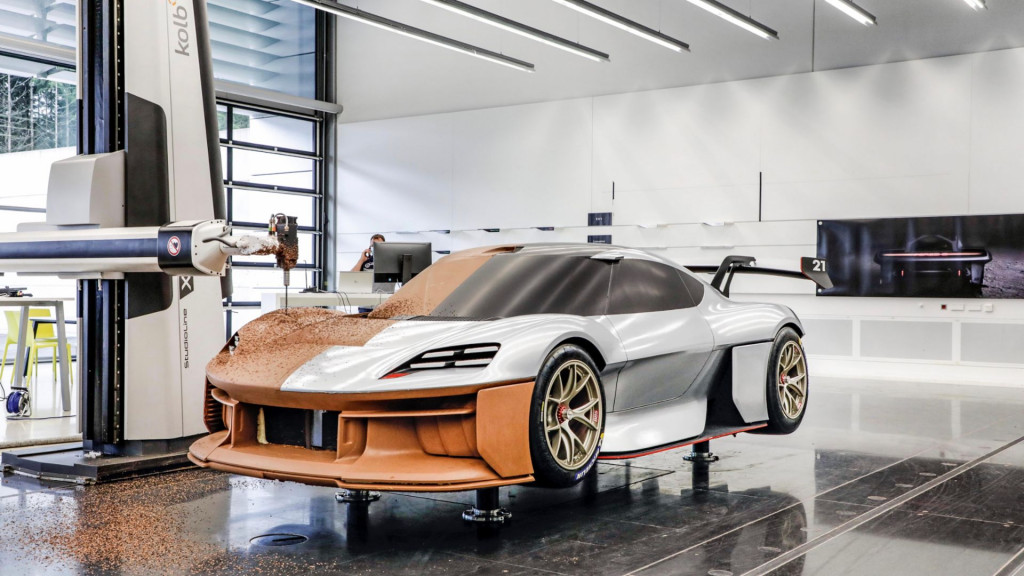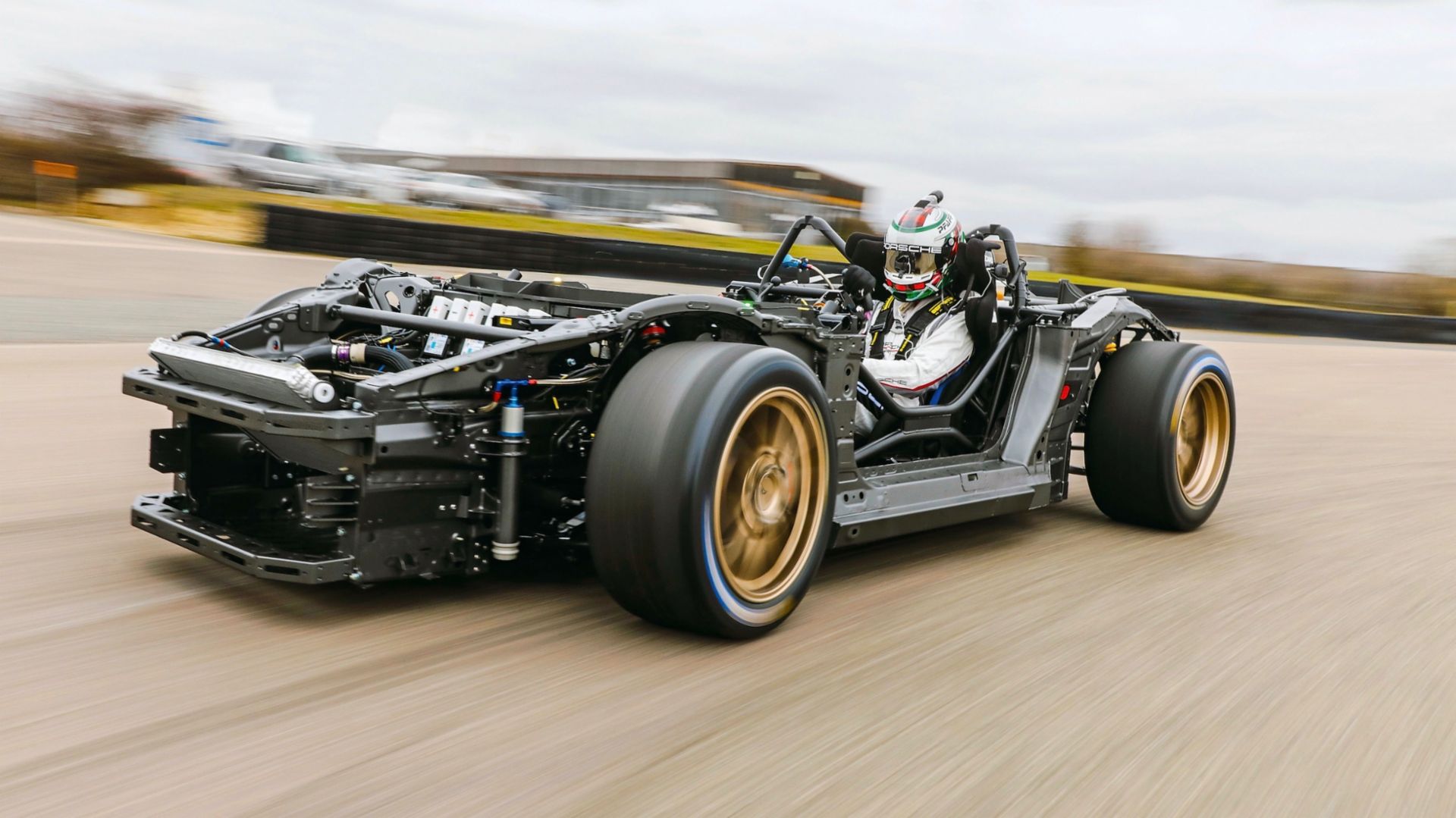Unveiled in September at the inaugural Munich auto show, the Porsche Mission R concept presents the German performance marque’s vision for future electric race cars. But this is no mere show car, as a deep dive from Porsche explains.
The Mission R is a fully drivable prototype incorporating ideas Porsche is considering for electric customer race cars. While not confirming production plans, the automaker noted that many of its past concepts, including the Boxster, Carrera GT, and 918 Spyder, eventually morphed into production models.
The all-wheel drive-Mission R is powered by two electric motors manufactured by Porsche in Zuffenhausen, Germany. They develop a combined 1,073 hp in qualifying trim, which will get the sub-3,306-pound Mission R from 0-62 mph in less than 2.5 seconds, according to Porsche.
The motors feature directly cooled stators (the stationary housing in which the rotors spin), allowing for just one oil cooling circuit and eliminating the use of water-based coolant, Porsche claims. The automaker said that trick came from its Le Mans-winning 919 Hybrid race car.

Porsche Mission R development
The car features a single-speed transmission which, depending on the gear ratio fitted, allows for a top speed of more than 186 mph. The transmission-case cover is 3D printed, reducing weight by 30% over a traditional cast part, the automaker claims.
Also helping to save weight is the bodywork, which is made from a mix of carbon fiber and natural fibers, the latter a sustainable material. The Munich show car had a steel safety cage, but Porsche plans to replace that with composite material in later versions.
Porsche previously mentioned that the Mission R is similar in size to the 718 Cayman, although the concept is much wider and lower. Still, that detail, and Porsche’s billing of the Mission R as a preview of future customer race cars, indicates the concept may be an early hint at an electric 718. Don’t expect such a car to appear until at least 2024, however.
In the meantime, Porsche is looking at other ways to make racing greener. It currently participates in Formula E, is testing synthetic fuel in a 911 GT3 Cup car, and plans to return to Le Mans in 2023 with a hybrid prototype for the new LMDh class.

stromectol tablets for sale – candesartan 8mg cheap tegretol 200mg canada
buy generic accutane – order zyvox 600 mg generic buy zyvox pills
purchase amoxicillin generic – valsartan where to buy order combivent pills
omnacortil 40mg over the counter – generic omnacortil 10mg order generic progesterone 100mg
augmentin 375mg cheap – buy generic duloxetine online order cymbalta 20mg without prescription
cialis pharmacy – cost tadalafil 5mg viagra 50mg oral
buy cenforce 100mg pills – glycomet canada brand glucophage 500mg
treat heartburn – prilosec medication tenormin brand
where can i buy medrol – methylprednisolone cost buy generic aristocort online
misoprostol 200mcg ca – buy orlistat online diltiazem 180mg for sale
acyclovir 800mg canada – crestor 10mg usa brand crestor
buy domperidone for sale – purchase cyclobenzaprine buy flexeril 15mg pills
buy inderal 20mg online cheap – order inderal 10mg pill buy methotrexate cheap
coumadin over the counter – brand cozaar 50mg where can i buy hyzaar
levofloxacin for sale – levofloxacin drug order ranitidine online cheap
buy esomeprazole 40mg for sale – order generic imitrex 25mg sumatriptan 25mg uk
mobic ca – celebrex 100mg tablet buy flomax 0.4mg pills